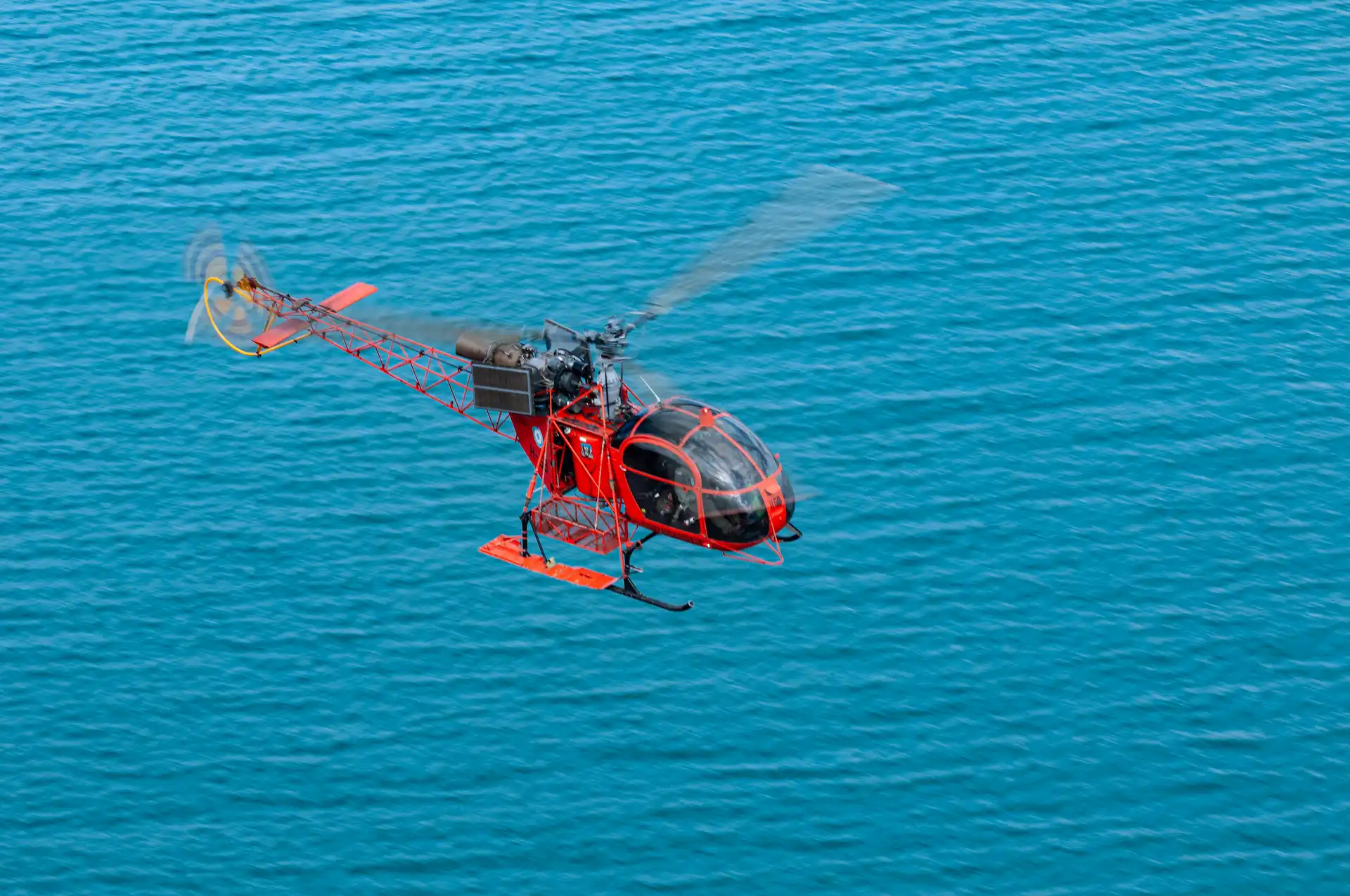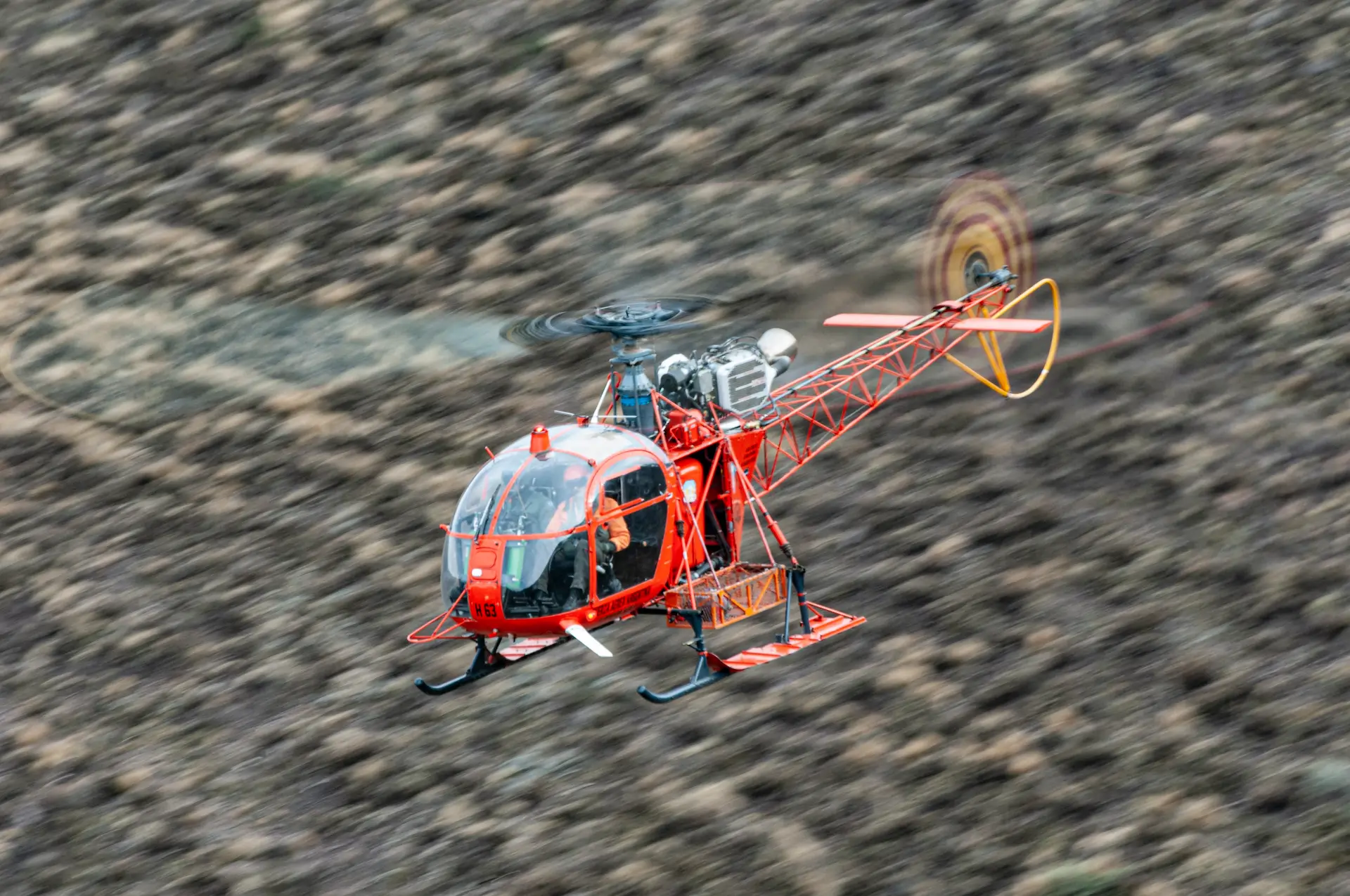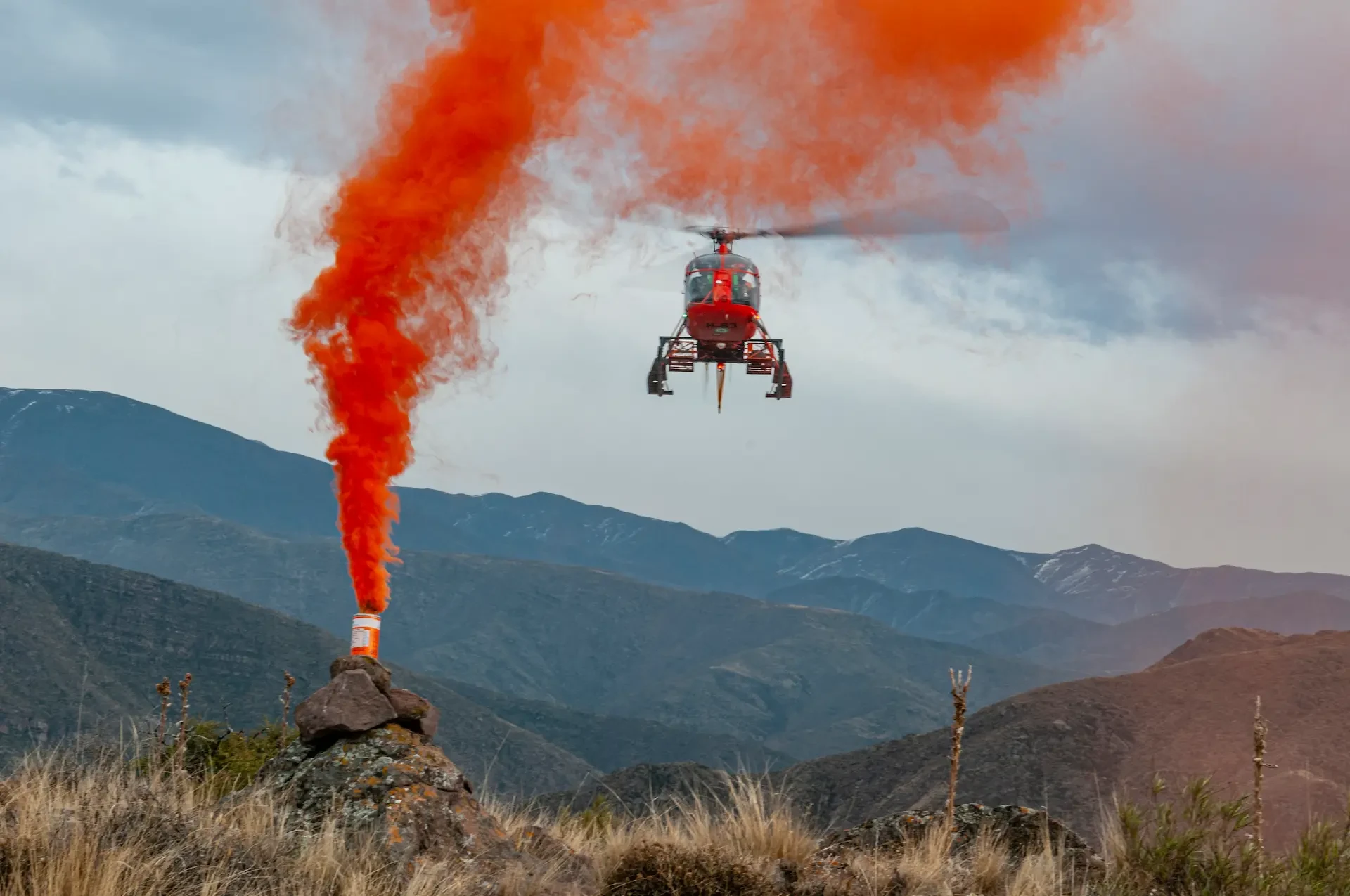The Lama Squadron of the Argentine Air Force is the only air unit in America that has reached the highest peak of the continent and one of the few helicopter squadrons prepared for high mountain rescue missions, usually operating above 5,000 meters high.
Geography Dictates
The Argentine geography poses a huge variety of environmental scenarios, ranging from the prairies, the jungle, steppes and coasts to the highest mountains in America. Because the IV Brigada Aérea (Air Brigade) of the Argentine Air Force is based in the city of Mendoza, very close to the highest part of the Andes, including the more than 6,900m Cerro Aconcagua (the highest mountain outside Asia) just 100km to the west, the unit is responsible for high mountain rescue operations. In the early 1970s, the Comisión Argentina de Demarcación de Límites Internacionales (CADLI, Argentine Commission for the Demarcation of International Boundaries), under the Ministry of Foreign Affairs, needed helicopters to carry out patrols of the border with Chile in the Andes. The Hiller UH-12E and Hughes 368HM helicopters loaned by the Argentine Air Force for this mission proved to be inadequate, as their engines were not powerful enough to operate at altitude. For this reason, in 1971 six Aérospatiale SA-315B Lama helicopters were purchased and on December 13, 1973 they were transferred to the Air Force to operate at the request of CADLI, first with the VII Air Brigade in Morón, Buenos Aires, and since 1977 with the IV Air Brigade. On October 29, 1977, one of the Lamas made the first landing of a helicopter at the top of Aconcagua.

Over the years more units were purchased to replace lost aircraft, totaling twelve serving with the Air Force, but currently only three remain operational with the Escuadrón III de Búsqueda y Rescate (III Search and Rescue Squadron) of the Grupo 4 de Caza (4th Fighter Group) of the IV Air Brigade.
The squadron is divided into two escadrilles, the Services Escadrille, with Cessna 182 and the Lama Escadrille. The latter's primary mission is to carry out search and rescue operations, mainly in high mountains, to provide SAR alert to CEPAC (Course for the Standardization of Procedures for Fighter Aviators). This is carried out in the same brigade with the FAdeA IA-63 Pampa, and to instruct the helicopter crews that are sent to the unit to do the course or high mountain flight.
Major Mariano Milanés, callsign ‘Mago’, is the current head of the squadron, and explains that this was always a small squadron, and almost all their flights are carried out in the mountains.
Mountain Training
Pilots arriving at the unit must take the Mountain Flight Course, which is also sometimes given to pilots of the VII Air Brigade, which is the other helicopter unit of the Argentine Air Force, (based near Buenos Aires). Before going to the brigade, pilots must complete the Joint Basic Helicopter Pilot Course, which takes place at the Army Aviation School, plus the instruction stage given in the VII Air Brigade with Hughes 500.
The annual Mountain Flight Course includes 70 flight hours. “The first part is an adaptation to the helicopter, flying, formation and navigation. And then it has a specific mountain flight pattern that is the core of the course. At the end of approval of the course the pilot is at Stage 3: suitable for mountain flight and stays in the squadron”, explains Milanés.
This learning allows them to know the particularities of high mountain flight, which, as Milanés explains, “beyond the loss of performances for flying at high altitude, lower air pressure, lower power, lower performance of the blades, the most particular are the changing conditions that the mountain has in terms of wind and orography. The mountain has microclimates, punctual [sic] weather conditions that are given by the shape of the mountain and the interaction with the wind. For example, you can fly in the mountains in a sector and have a wind coming from the west and travel 15 miles south and you have a wind coming from the south. So, the environment makes mountain flight so risky. And we try to make a set of flight techniques to mitigate the risks and operate as safely as possible”.
Techniques
Over the years, the unit perfected its techniques to operate at high altitude, which are turned into a flight directive. This began with the French instructor who traveled to Argentina in 1977 along with the first helicopters and was improved over the years. The most important technique is the procedures for entering a certain point. “It is done with a high reconnaissance, then low reconnaissance and a calculation of available and necessary power. An entrance to the point maintaining parameters of feet and knots to throw a smoke grenade and corroborate that the wind we calculate is correct. In the reconnaissance we can determine a general trend of the wind, the lowest is made with about 300 estimated feet, but it does not give us certainty. What gives us certainty is the smoke grenade, which tells us where the wind comes from and an estimate of the intensity,” he explains.
In addition, when planning the entrance to the point, an escape route in case of an emergency and the position of the sun are taken into account so that the shade and light do not confuse the pilot’s perception of the routes. “All this together makes us make an entrance as safe as possible,” says Milanés and adds: “in an unknown place, where we do not know the height, we do not have a weather station and we do not have certainty, until we are in the place, if really the necessary power is available. By playing with that we mitigate the risks as much as possible.”

In the Lama they do not normally make long-term navigations and, for safety, in the mountains it is flown at low speed, at around 60 knots. “But mountain navigation has its particularities as well. As the helicopter has a high ceiling, we can make navigations above the peaks or flying between the mountains. For example, inside the ravines you fly in a special way, at two-thirds of the height of the slope, always attached to one of the slopes, because always away from the slopes is where the air moves at a higher speed. Always one slope has an ascending wind and the other descending wind, so we detect which is the ascending and we stick to that. If we have an emergency and we fly in the middle, we will be limited,” explains Milanés.
Rescue
The Lamas have the search and rescue in high mountains as their main mission, both of ejected or injured pilots and of anyone in experiencing an emergency in the mountain. This also includes civilians because the force has SAR responsibility over all Argentine territory except the sea.
The Andes Mountain Range stand out not only for its extraordinary heights, but for having a very harsh climate, especially in winter. In Winter it is almost impossible to enter the mountains due to cold weather, snow and wind. So, any rescue flying there requires very detailed planning despite it also needing to quick, so as not to delay the departure of the helicopter. In all missions they always fly with two helicopters, to support each other.
“The first thing is to know the status of the person and their location. It is planned how to get to the place and with what means, if we go with two helicopters, a doctor, crane. What this helicopter can do is medical evacuation, it is different from aeromedical transport. Medical evacuation is an action that is done to avoid something worst. And it can be done with an aircraft, even if it does not have the minimum equipment to stabilize a person,” explained Milanés, although he added that they carry a stretcher and provide oxygen to the patient, with the aim of getting them out of the mountains and quickly to a hospital.
“Once the victim's information is known, we plan what is going to be done and where he is going to be taken. Because if the case is very complex you will take him to the first place where you can put him in an ambulance. If the patient is not in a bad condition, he can be taken to another place further away. A patient who has a pulmonary edema can not be long at altitude. You have to lower him and take him by land,” he adds.
The minimum crew is a single pilot, although it changes according to the situation. If they plan to make a landing, the crew will include a mechanic. If there is a requirement for a medical evacuation, then a doctor and sometimes also a nurse are included. On external cargo missions they carry a cargo operator.
“The squadron includes many specialties. We have external cargo operators, in addition to pilots, we have a search dog, adapted to the helicopter and the pararescue personnel is also important. They have done the GOE (Grupo de Operaciones Especiales, Special Operations Group) rescue course, some are commandos, others are just pararescuers. The mechanics belong to the maintenance service of the Inspection and Spare Parts Squadron of Technical Group 4, but in the operation, they are integrated into the squadron. The same with the doctors and nurses, who belong to Base Group 4,” says Milanés.
The Brigade also has, within the 4th Fighter Group, the Search and Rescue Subcenter which includes the Rescue Department. It is responsible for search missions in the mountains, and it integrates with Squadron III.
For operation in other parts of the country, the Lama has the advantage that it can be quickly dismantled and up to two aircraft can be loaded into the hold of a C-130 Hercules. “It is a partial disassembly, the mast, the main blades and a tail rotor blade are dismantled. The last task that was done of this type was done in Salta province, they arrived at the point and in about 3 hours it was already armed (sic) again”. This was also done in Catamarca when on June 2, 2018 a Mi-171 of the Argentine Air Force had to land on a hill due to bad weather while it was carrying national government officials. It had to spend a cold night with the passengers having no thermal clothing for protection, so the helicopter’s heating system was kept on, consuming the fuel necessary to return to the airfield. Two Lamas were deployed in a Hercules, and they then carried the fuel in a sling to the hill.

In training flights, they never operate above 15,000 feet, but in real rescues this can be overcome if conditions make it necessary, and where supplemental oxygen must always be used.
“The Squadron has made rescues in Nido de Cóndores, which is the most common extraction point to get someone down from Aconcagua, it is about 5,400 meters high. It is not common, but if the helicopter has a ceiling of 23,000 feet you have a margin of power and safety,” says Milanés. In these cases, only the pilot goes since he must return with the patient and the helicopter is already at the limit of the weight with which it can take off from the mountain.
Replacement
Currently, the replacement of the Lama is one of the main priorities of the Air Force. The intention is to share the purchase cost with the Army, which also operates Lamas, and so the selection process is being carried out by the Joint Chiefs of Staff. The Leonardo AW119Kx Koala, the Airbus H125 Écureuil and the Bell 407GXi are the options being considered, although in October 2022 a commission traveled to India to evaluate the HAL LUH MK.1, following an Indian offer. Although Bell model was officially selected in December last year (2022), the force reportedly preferred the Écureuil. The intention is to buy a first batch of six examples, half of them for the air force, with the hope of acquiring more in the future.

 HOME
HOME



